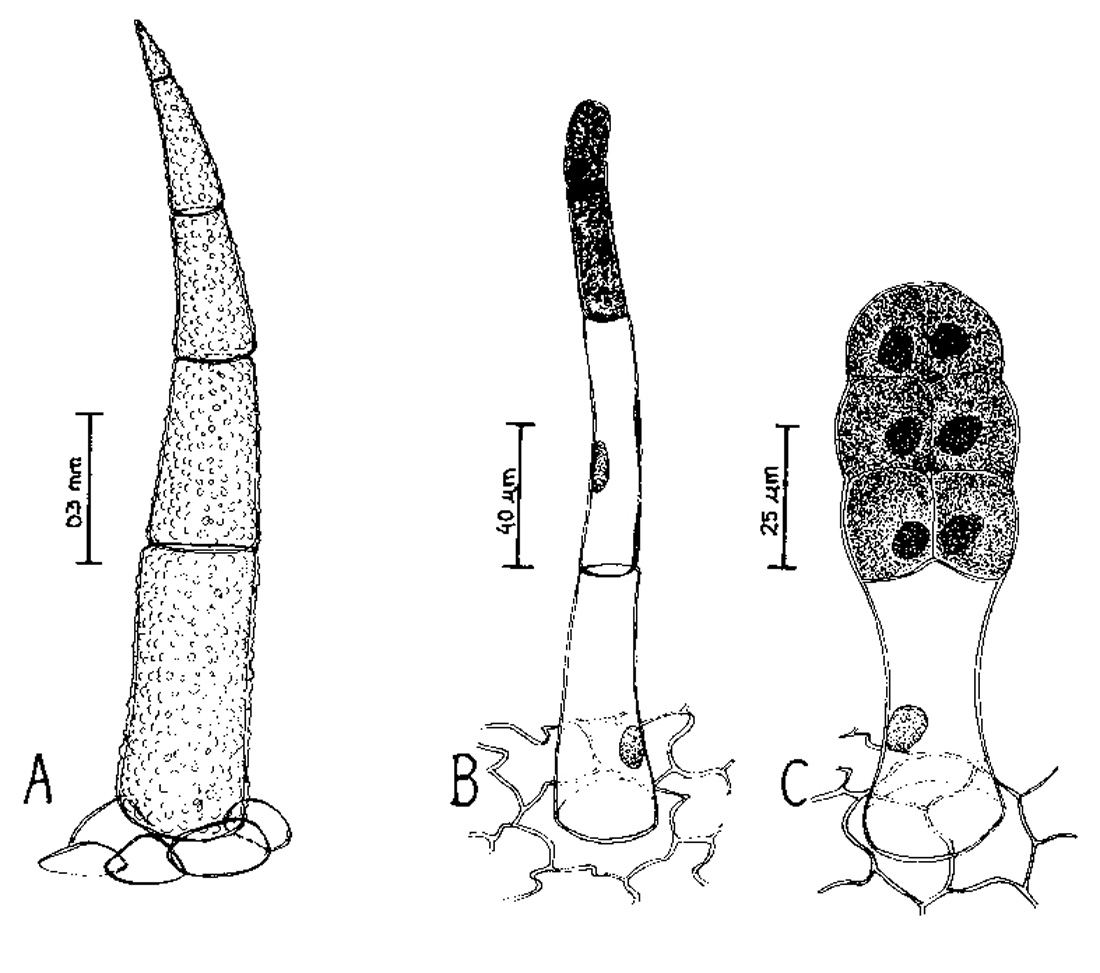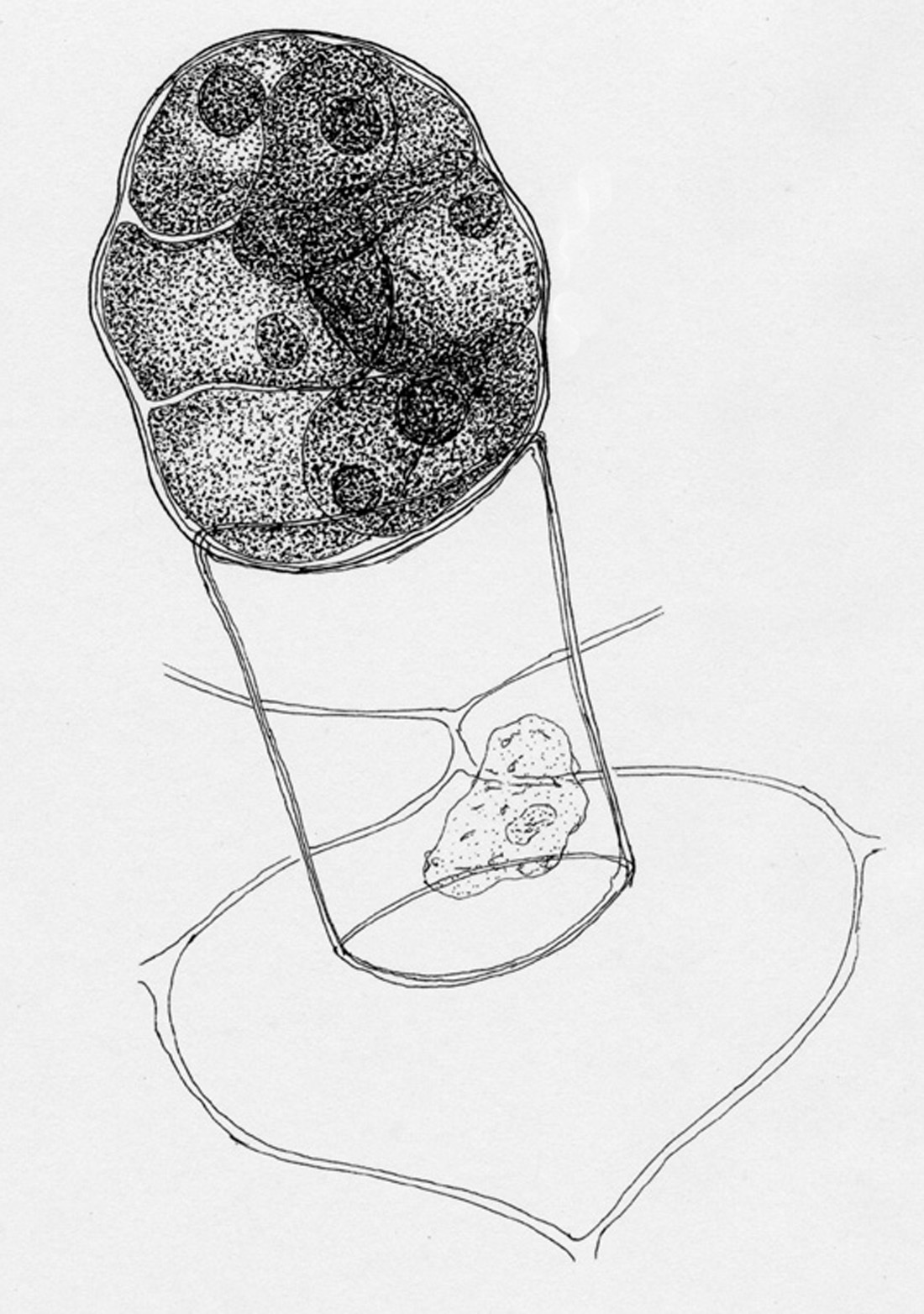
Figure 1. These trichomes grow on plants of the genus Jaltomata. Forked and dendritic trichomes are also common but are not shown.
The following applies specifically to collection Mione & Bye 602:
A. Trichomes of the leaves, axes, and abaxial faces of the perianth are uniseriate, multicellular, unbranched, gradually taper to a point and appear to be nonliving.
B. Trichomes of the adaxial face of the corolla are living, only distal cells contain dense cytoplasm, and the terminal cell is rounded.
C. Trichomes of the abaxial face of the corolla (also found on leaves) are living and have a multicellular head borne on a unicellular stalk. The multicellular head stains densely with neutral red but the stalk cell does not absorb this stain.
(Photo by Thomas Mione, Mione et al. 647, plant grown in Connecticut, USA)

(Jaltomata sanchez-vegae was grown in Connecticut, USA from seeds collected in Peru, photo by Thomas Mione, Mione et al. 647).